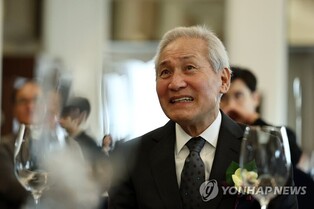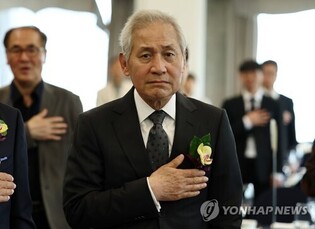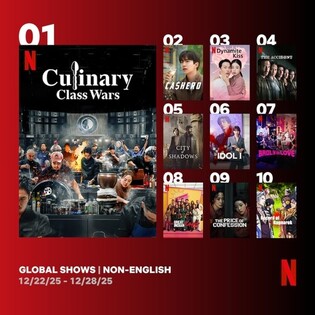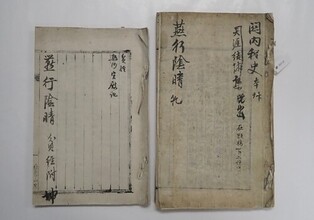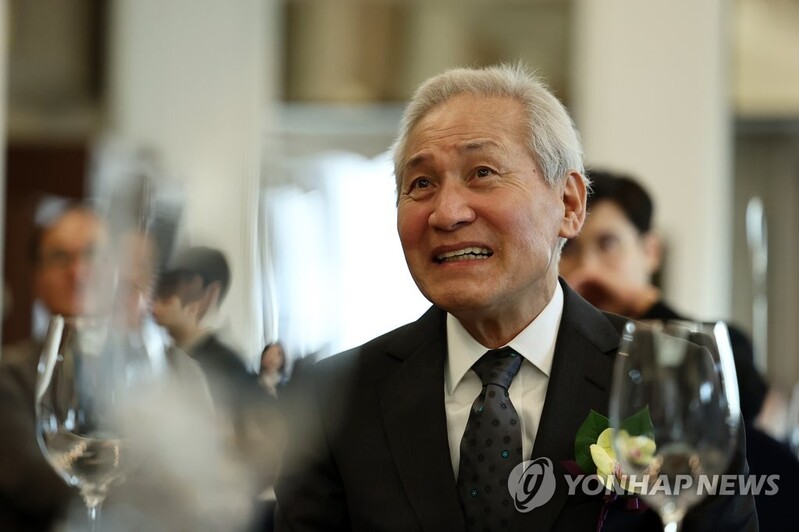*Editor’s note: K-VIBE invites experts from various K-culture sectors to share their extraordinary discovery about the Korean culture.
Choi Man-soon's Medicinal K-Food: Bone Soup Full of Love
By Choi Man-soon, Food Columnist and Director of the Korea Traditional Medicine Food Research Institute
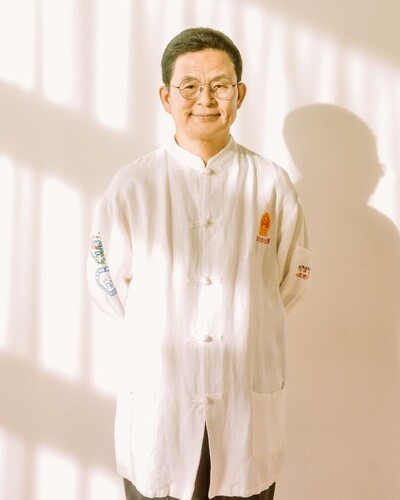
Bone broth is a soup made by simmering beef bones, particularly the leg bones and joints, for an extended period of time. This practice of using leftover bones after slaughtering cattle to make broth has been in place for many years.
Bone-based broths have become a popular and nutritious food. Bone broth contains various health benefits and has traditionally been considered a health food.
Bone broth is a dish that has been favored for a long time in both Eastern and Western cultures, with deep cultural significance.
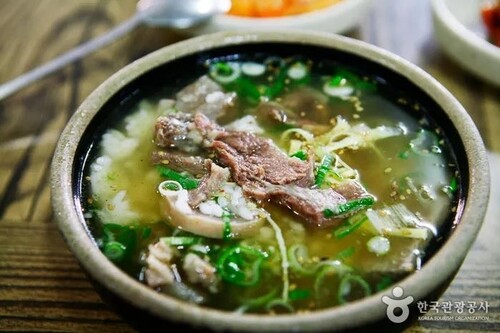 |
| ▲ This photo of Korean bone soup is provided by the Korea Tourism Organization. (PHOTO NOT FOR SALE) (Yonhap) |
Robert F. Kennedy Jr., the nominated U.S. Secretary of Health and Human Services, gained attention with his slogan "Make America Healthy Again." He has argued that the industrialization of food has made Americans sick, and he declared a war on ultra-processed foods. He stated, "We have a generation of children swimming in toxic soup," revealing his hostility toward ultra-processed foods.
The National Institutes of Health (NIH) reports that 58% of the calories consumed by Americans come from ultra-processed foods. According to research, consuming a lot of ultra-processed foods can cause 32 different issues, including heart disease, mental health disorders, and type 2 diabetes.
Bone broth, unlike problematic ultra-processed foods, is a nourishing food that preserves the natural flavors of its ingredients.
In traditional medicine, beef bones are said to be sweet in taste, warm in nature, and non-toxic. They are believed to strengthen the body’s muscles and bones, helping to prevent joint pain and osteoporosis.
The collagen in the bones helps replenish the skin's elasticity, making it more beautiful. However, it is a principle of traditional medicine not to eat bone broth with alcohol or spinach.
To me, bone broth symbolizes my mother’s deep love. It was also a warm bond that brought our family together. On the days when the cold winter wind would sting our cheeks, my mother would light a fire under a cauldron in the kitchen to make the broth.
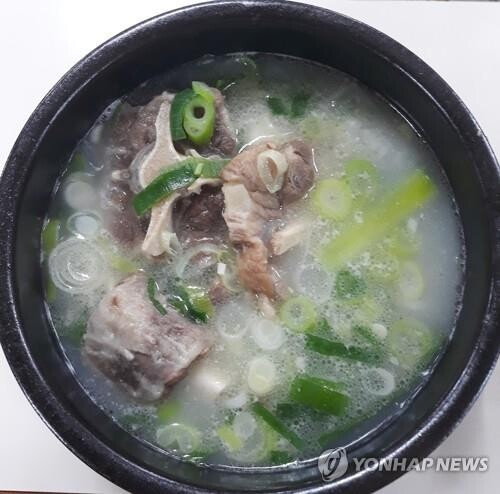 |
| ▲ This undated Yonhap file photo shows Korean ox tail soup. (Yonhap) |
As the bones slowly simmered in the water, releasing white steam, that steam was filled with my mother's love, filling the house. The warm broth, which melted not only my frozen body but also my heart, seemed to appear magically from her hands.
That broth was not just food but a cozy, safe refuge, like my mother’s embrace. Even in the hot summer, my mother's bone broth consistently surrounded us. A bowl of the creamy broth contained her devotion and love for the family, and its taste made me remember my mother's love, a love that never fades with time.
The "Chapter of Emptiness and Fullness" (虛實의 章) from Sun Tzu's Art of War deals with flexibility in warfare and strategic agility. It is a principle of exploiting the enemy’s weaknesses, avoiding their strengths, and adjusting one’s position to gain an advantage. This can be compared to the process of making bone broth.
Sun Tzu advises targeting the enemy's weakness (虛). To exploit a weakness, he emphasizes thorough preparation. Similarly, when making bone broth, if the bones are not properly prepared or the preparation is neglected, the broth will turn cloudy, and the rich flavor and health benefits will be lost.
Just like targeting the opponent’s weaknesses, the process of thoroughly rinsing the blood from the bones in cold water is crucial during preparation.
Next, Sun Tzu advises avoiding the enemy's strengths (實). If the heat is too strong while making bone broth, it will burn or fail to extract the beneficial properties. Similarly, when cooking bone broth, one must avoid confronting the opponent’s strengths directly and instead sidestep by adjusting the heat appropriately.
Rather than using high heat, the broth must be simmered slowly over low heat to draw out the deep flavor and health benefits.
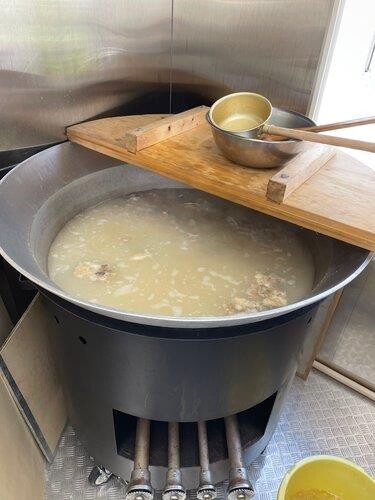 |
| ▲ This photo shows the boiling bone soup in a temporary facility on July 20, 2021, at the Korean athletes' food support center of the Korean Olympic Committee supporting the Korean team at the Tokyo Olympics. (Yonhap) |
Sun Tzu also emphasizes the use of change and fluidity. When making bone broth, the process is not completed in one step; it requires repeated simmering over a long period. Initially, the flavor may be weak, but over time, the broth becomes increasingly rich and full.
This is similar to adjusting the situation dynamically in warfare to achieve the optimal outcome. In the process of making bone broth, one should not fear change but instead move step by step toward the optimal result.
Sun Tzu advises hiding one’s strengths and luring the opponent in. In making bone broth, it is essential to take time to develop a deep, rich flavor. Rushing through the process will prevent the flavors from fully infusing. To bring out the true essence of the bones, one must simmer slowly and encourage the deep flavor to emerge.
This mirrors the strategy of deceiving the opponent and leading them in the desired direction. When making bone broth, one should not rush but rather thoroughly prepare and wait for the moment when the strengths—its health benefits—can be fully realized.
Finally, Sun Tzu advises sensing the state of the opponent. While making bone broth, it is important to continuously check the state of the broth, skim off the fat at the right moment, and adjust the heat. This reflects the principle of constantly assessing the situation and responding appropriately, as in the "emptiness and fullness" strategy.
One must observe the opponent’s condition and adjust the strategy accordingly.
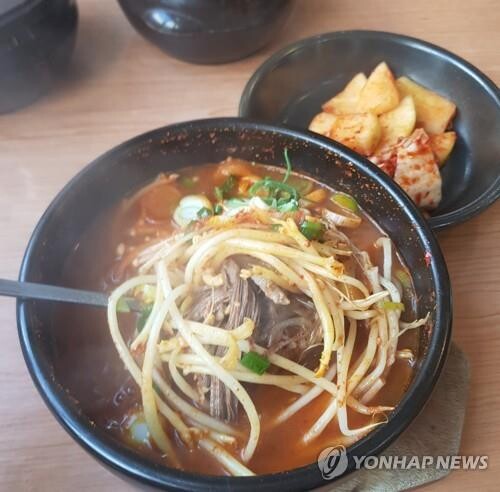 |
| ▲ This file photo shows spicy flavored bone soup. (Yonhap) |
In this way, the process of making bone broth aligns with Sun Tzu’s philosophy in the "Chapter of Emptiness and Fullness," which emphasizes "using the opponent’s weaknesses and strengths, while striving for victory through change and agility."
In both cooking and warfare, the key elements are preparation, patience, flexibility, and wise responses.
For Koreans, it has long been said that a meal without soup feels incomplete, as if the meal has not been properly eaten. Therefore, on Korean dining tables, soup and rice always appear together.
This led to the development of the practice of mixing rice into soup, known as "tangban" (湯飯). There are 30 to 40 different variations of tangban, depending on the ingredients, the method of mixing, the way the broth is poured, and the toppings. Among these, the most representative is bone soup (gomguk).
In the Hunmongjahoe (훈몽자회), published during the reign of King Jungjong of the Joseon Dynasty in 1527, it is noted that "tang is a rare food with rich broth that requires a lot of effort." Among these, bone soup was a highly nutritious dish and, due to its rich flavor, became a popular health food that appeared on the royal court’s twelve-course meal for the king.
Additionally, the Siui Jeonse (시의전서) mentions "goeum" (膏飮), which is a type of broth. The text explains that "the broth should be made by boiling leg bones, shank meat, and cartilage in a large pot with plenty of water over a gentle heat until it becomes thick and cloudy."
As such, bone soup has been considered an excellent nutritional supplement that boosts physical strength, making it a dish enjoyed by the royal family and regarded as a royal court food for all seasons.
In the West, bone soup is known as "bone broth." It has been consumed since ancient Roman times. The broth made by boiling bones for a long time is rich in nutrients and was widely consumed by commoners and nobles alike.
After the 19th century, bone broth became a fundamental stock for soups and sauces in Western cooking. Recently, it has gained attention as a health food alongside the wellness trend. Used as part of low-carb diets such as the ketogenic diet, bone broth is emphasized for its health benefits, including reducing inflammation, improving skin health, and aiding digestion.
Bone broth has now transcended the role of simple stock to become a traditional food that is beloved for health and wellness by people in both the East and West.
In the past, it was used as a base for sauces and cooking, but today it has evolved into an independent food for health and lifestyle.
The clear and savory bone broth embodies both the long culinary tradition of the West and modern-day aspirations for health. Similarly, Korean bone soup has also evolved into a health food for wellness in contemporary times.
With the K-food craze, bone soup is once again gaining attention amid trends of minimalism and healing, becoming another icon of K-culture.
(C) Yonhap News Agency. All Rights Reserved



















